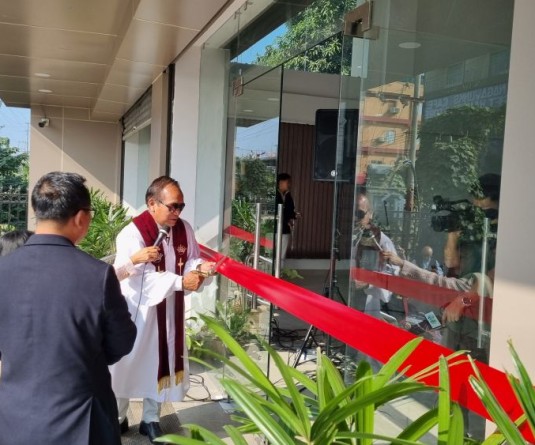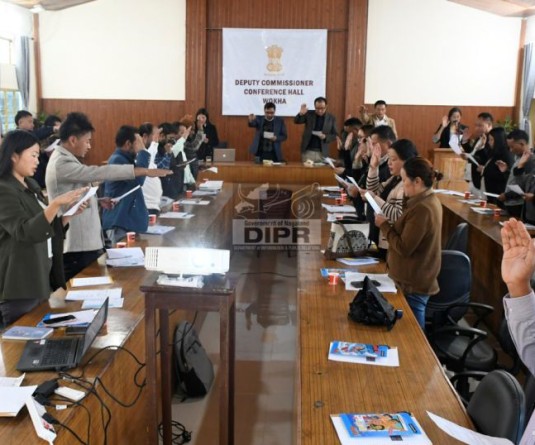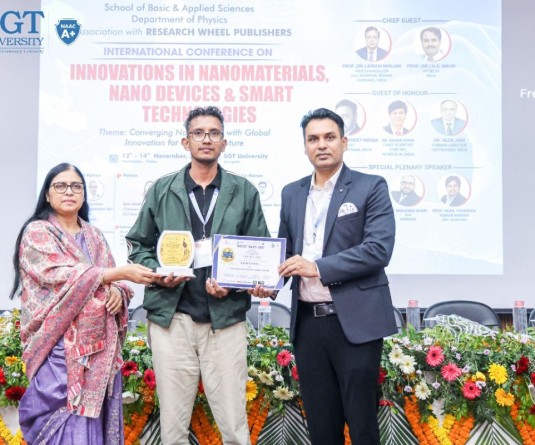
Our Correspondent
Kohima | August 11
Expressing deep concern over the huge amount going outside the state for import of livestock and other essential commodities, Nagaland Chief Minister, TR Zeliang today stressed on the need to attain self-sufficiency by 2025. He said Nagaland Vision 2030 document with special focus on self-sufficiency in food production, livestock and others is on the verge of completion.
Addressing a state level watershed conference-marking culmination of Integrated Watershed Management Programme (IWMP) Batch -1 here under land resources department, he said the state is spending Rs. 200 crore annually to import of livestock alone.
He said two to three thousand crore is also going towards RCC construction works in Dimapur alone. On declaration of the year 2016 as “Year of construction workers,” with special focus for skill development and upgradation, he said that the government will train the youth on extensive manner.
He said that unless the Naga youth are willing to work, our money will continue to go outside the state. He questioned the gathering that if the people from other states can perform why not the Nagas.
“As long as we depend on import our economy will not grow,” he said and urged upon the people to come forward and put collective effort to attain self sufficiency in meat, egg, milk, vegetables, fruits etc. He said a “people’s movement” is required to attain self sufficiency.
Sharing the success story of Rajasthan and Haryana in the “White Revolution,” the Chief Minister suggested starting a “Crops Revolution” movement in Nagaland, assuring support from the government’s side, provided concrete decision is taken by the people.
Towards this, he encouraged the farmers to identify proper crops based on suitability in their respective areas. He said watershed development programme has a critical role to play in ensuring conservation and utilization of natural endowments such as water, land, animals and human resources in a harmonious and integrated manner for increasing agricultural productivity and enhancing peoples’ livelihood.
He congratulated the Land Resources Department for working with a focused approach and implementing the various programmes successfully by bringing about many positive changes for the people.
Meanwhile, dwelling on the Naga political problem, he said the Government of India is willing to solve the Naga political problem but stated that it is time to “question ourselves where we are standing and without solution what would be the future of our coming generation.” He said that the present stand of Nagaland government is that the Naga solution should be inclusive of all the stake holders.
Parliamentary Secretary for Land Resources, BS Nganlang Phom mentioned that watershed management is not only a hydrogical unit but also socio-political entity which plays a crucial role in determining food and economic security that provides life support services to the people.
He stressed that more importance should be given to rain water harvesting and added that understanding the hydrologic cycle is a key to the proper management of water which helps to understand the role and cycle on human impact.
Chief Secretary, Pankaj Kumar said that IWMP has become an integral component of the new Pradhan Mantri Krishi Sinchayee Yojana (PMKSY) from 2016-17.
Watershed management is essentially a multi-disciplinary effort requiring involvement of the people as well as expertise cutting across several disciplines and has also the potential to increase the ability of the community to conserve natural resources, raise farmer income and build resilience to the changing pattern, he added.
Land Resources Secretary Y. Kikheto Sema said the central fund to the state for IWMP has declined during the last few years.
“After the 14th Finance Commission award and also launching of NITI Ayog, 10% extra devolution was given to Nagaland increasing it from 32 % to 42 %. However, in reality, it has not helped small states like Nagaland,” he said. He said that the state received only Rs 27 crore under IWMP 2015 against total outlay of Rs 180 cr. During the current year, against total annual plan outlay of Rs 264 cr, allocation for the state was Rs 28.20 cr which is hardly 10.66% of the total outlay, he added.
Kikheto said that out of such meager allocation, salaries of around 440 WSC members are paid and yet the Department was trying its best for fruitful implementation of activities under IWMP.
Talking about rubber plantation, he said there were 66 lakh standing rubber plants which cover approximately 5 % of total cultivable area for rubber in Nagaland. Out of 66 lakh, 6 lakh trees are being tapped and has the capacity of generating more than Rs 50 crore annually, he added
He said it was beneficial both economically and environmentally, to opt for rubber plantation and other alternatives such as kiwi fruit farming rather than jhum cultivation.
However, Kikheto expressed concern over how a jhum cultivators would sustain during the 6-7 years before latex tapping starts if one has to shift to rubber plantation.
A power-point presentation on the overall view of the watershed activities was presented by Land Resource Director Mhathung Yanthan.
Earlier, the CM released a book titled ‘Best practices and success stories of IWMP.’ The department also gave away awards for best performing villages, best farmers and best SHG.
Further, a total of Rs. 3.66 crore watershed development fund was also handed over to 247 villages in this IWMP Batch 1 project.






